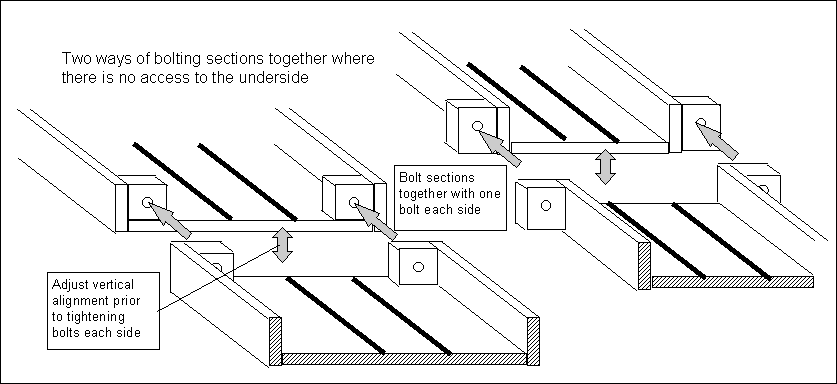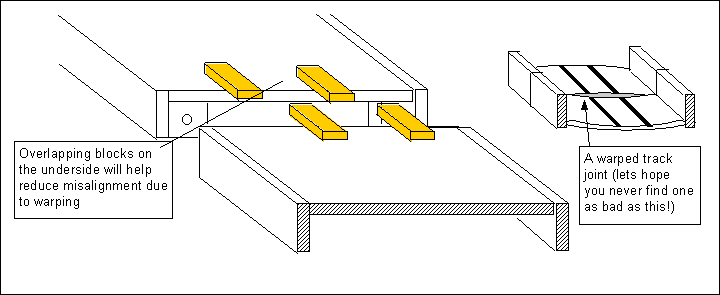I was very interested in your web articles and have been inspired to try to build my own track. One thing wood working experience tells me is that a completely new type of project is best built as a small scale prototype before progressing to the big project.
My idea is to build a few track sections to the same separation and slot size as my Scalextric, and join them in as part of a circuit. This should give me some long smooth straight sections, and also some more interesting possibilities for curves. While it also lets me use the Scalextric I have for layout changes while I experiment my way to a bigger layout.
I can get 9mm MDF, which is pretty close to right thickness, and have worked out a few possible ways I can cut a bit of Scalextric track in half and blend it in to make an adapter from new to old.
All your construction techniques seem to rely on the track being built on a frame, and underside of the track being accessible to bolt joints together.
To use the built track like Scalextric I will have to lay the MDF directly on the floor. Joining built sections then has to be done above the track surface, as there is no way I can imagine building a robust connection in the 9mm thickness.
I am considering building side walls and connecting on the walls.
Another alternative that springs to mind is a 'hammer head' end to each section, with some form of surface mounting catch (as found on a hard case of a musical instrument)
Do you have any suggestions on how I could join track sections built in this way?
Or do you recommend I don't try this, and simply put a bit of Scalextric at the end on each section?
Cheers, M
Answer
I agree it's certainly a good idea to start with a small section of track before attempting a larger one.
Using the boards straight on the floor will probably work OK in your application, but I wouldn't recommend it for a club track. Obviously care will be needed to avoid damage by walking on it! I guess you've worked out a good way of joining commercial track to MDF - I'd be interested to see how you've done it.
Some sort of connection underneath the track surface is the best way to get a really smooth joint, particularly over 4 or more lanes. With less well constructed joints the joints can distort a bit, (see the drawing at the bottom of the page). When this happens it's usually possible to get 2 or 3 lanes aligned properly, but getting them all right at the same time is more of a problem. If there are only two lanes to get right, then it's much easier. It sounds like the sort of cars you are using will be reasonably tolerant of slight imperfections in the joints. I've suggested a couple of joint designs drawing below which should work OK in you application.

The bolts should be a loose fit in the bolt holes. By resting a hand across the track surface where they join you can feel if the alignment is right, and adjust the joint if necessary before final tightening. I know this sounds a bit crude, but once you get the knack it can be done very quickly and surprisingly accurately. I've known several portable club tracks that were assembled this way (with the bolts underneath), and 2 or 3 people could get it a 100 ft track up and running in about 15 minutes.
Over center latches (the sort of thing used for holding box lids shut etc.) can be used for holding track sections together, but
1 They don't provide any precise location, so you need some more positive location (tennons ,dowels etc.)
2 They don't grip the two sections together as firmly as bolts, so you cannot use them to pinch together a loosely fitting parts as described above.

The above drawing (right) shows a drastic example of warping at a joint (OK the drawing exaggerates it for clarity). Some extra support can reduce this problem. The About the simplest up and down location that works is some overlapping pieces of wood underneath the boards as shown in the left of the above drawing. These will work OK with 1/4 inch / 6mm thick blocks which might be acceptable for your use.
Good luck with your track building, I'd be interested to hear how you get on.
Chris. Frost
Feb 2003